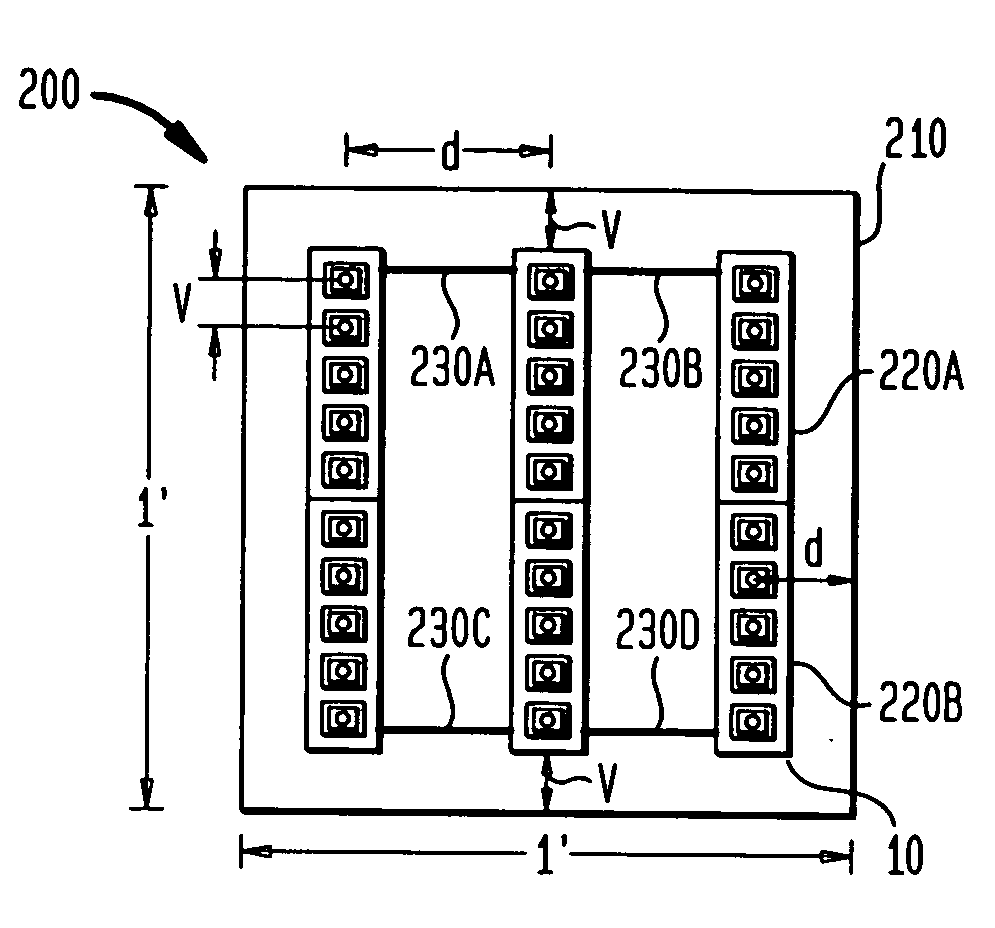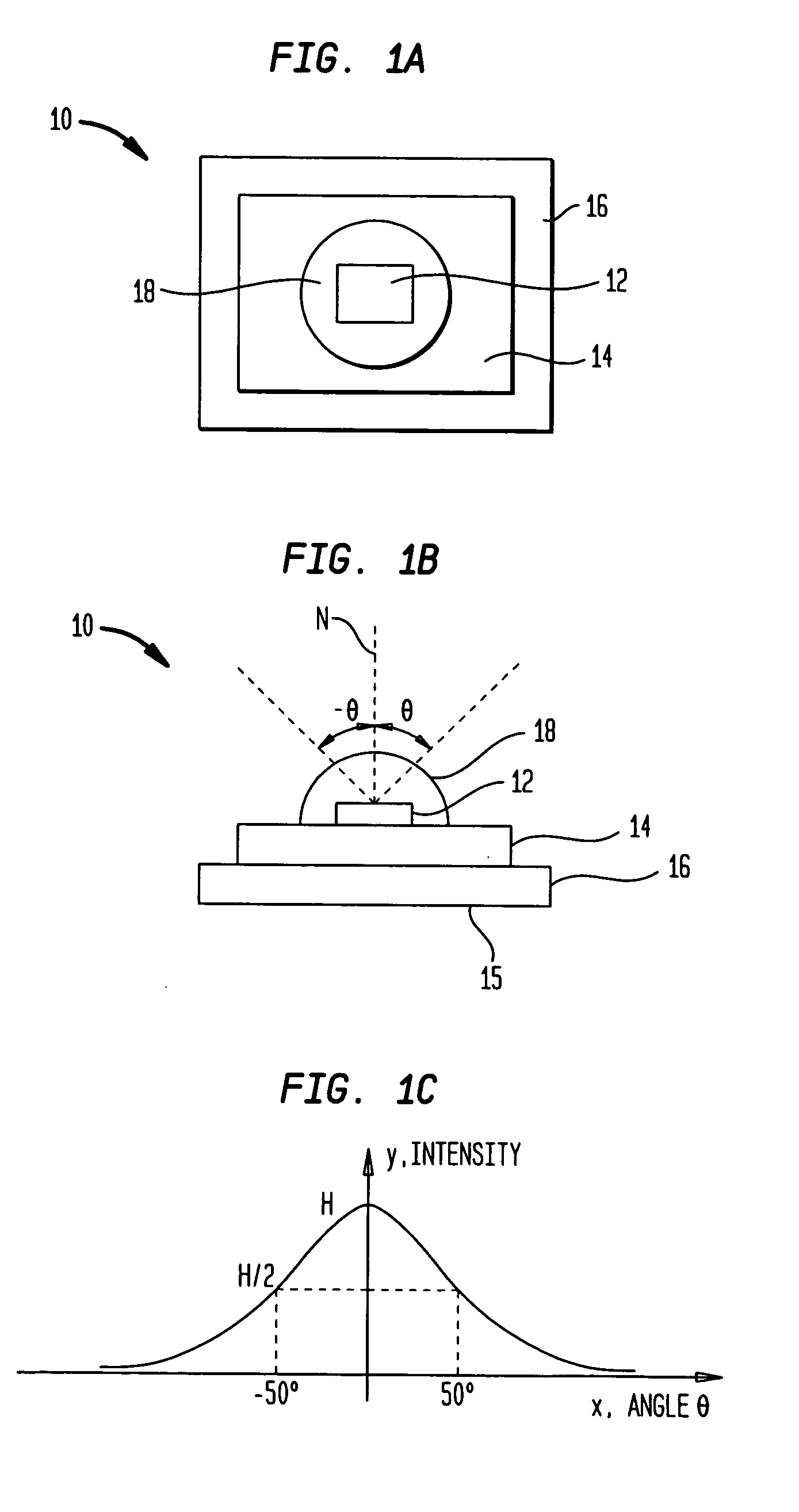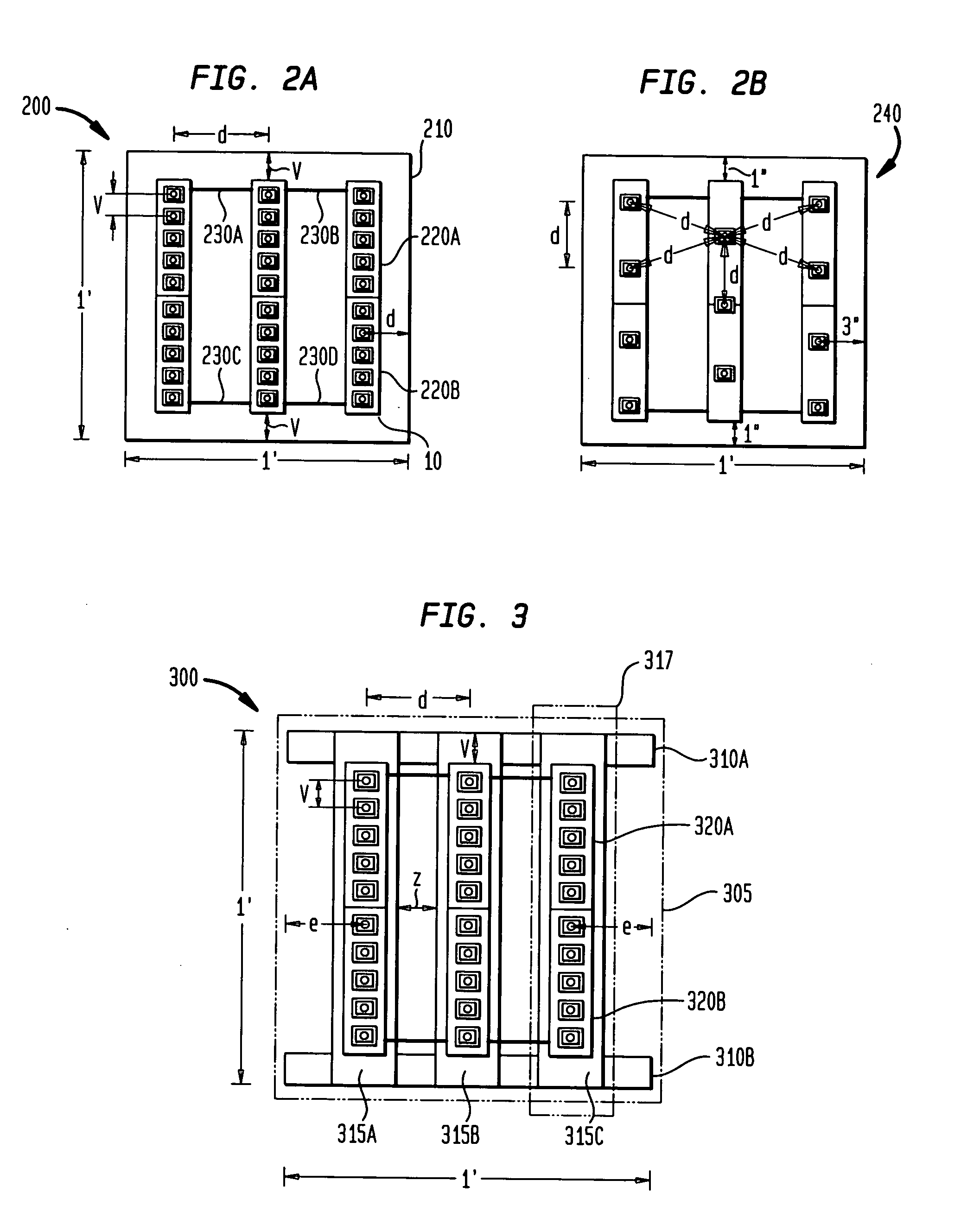Light Emitting Diode Packages
- Summary
- Abstract
- Description
- Claims
- Application Information
AI Technical Summary
Benefits of technology
Problems solved by technology
Method used
Image
Examples
Embodiment Construction
[0023]FIG. 2A shows a top view of a 1 foot×1 foot light emitting diode (LED) lighting package 200 in accordance with the present invention. The LED lighting package 200 includes a backing 210 of thermally conductive material such as aluminum. Backing 210 as shown in FIG. 2 is a planar sheet of aluminum with a thickness of approximately 1 / 16 inch. It should be noted that other backing constructs may provide additional heat dissipation properties and can be employed in similar arrangements as backing 210. For example, the patent application entitled “Light Emitting Diode Lighting Package with Improved Heat Sink” concurrently filed with this application addresses additional backing structures and is incorporated by reference herein in its entirety.
[0024] Also, it is recognized that other thermally conductive materials such as ceramics, plastics, and the like may be utilized. Aluminum is presently preferable because of its abundance and relatively cheap cost. The LED lighting package 2...
PUM
 Login to View More
Login to View More Abstract
Description
Claims
Application Information
 Login to View More
Login to View More - R&D
- Intellectual Property
- Life Sciences
- Materials
- Tech Scout
- Unparalleled Data Quality
- Higher Quality Content
- 60% Fewer Hallucinations
Browse by: Latest US Patents, China's latest patents, Technical Efficacy Thesaurus, Application Domain, Technology Topic, Popular Technical Reports.
© 2025 PatSnap. All rights reserved.Legal|Privacy policy|Modern Slavery Act Transparency Statement|Sitemap|About US| Contact US: help@patsnap.com



